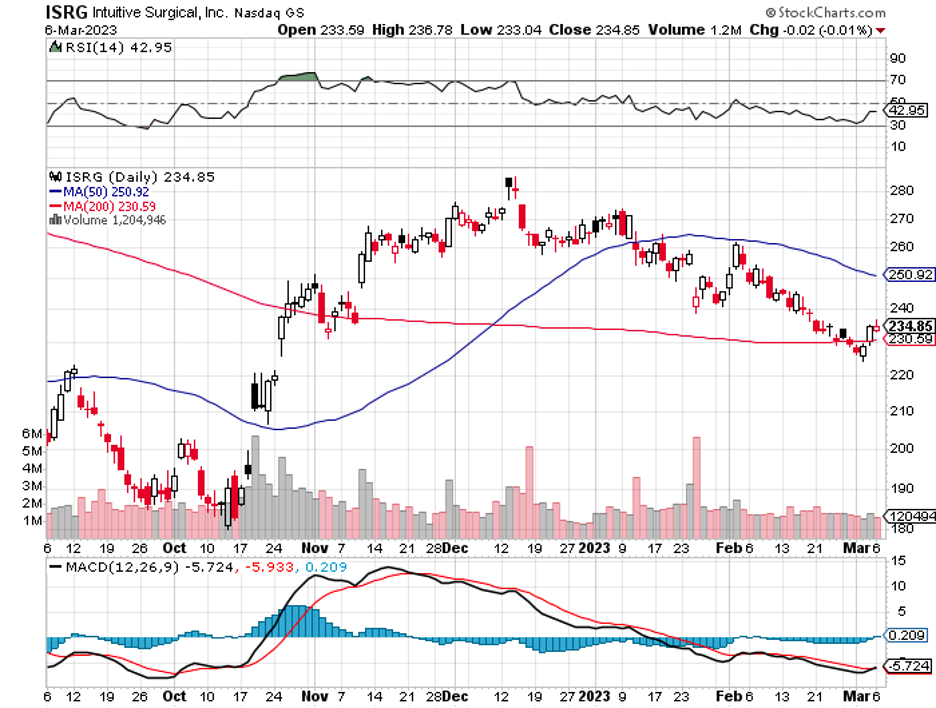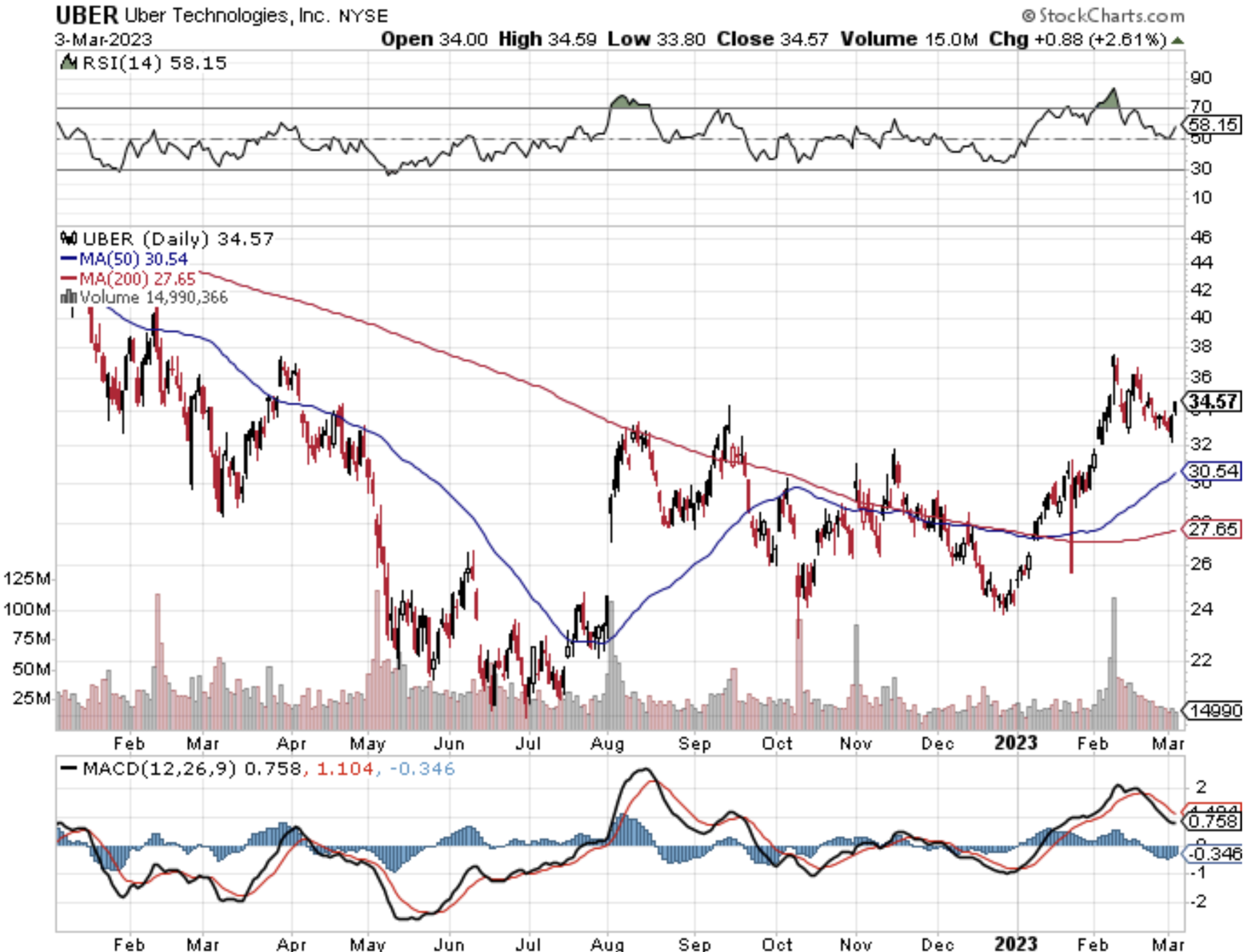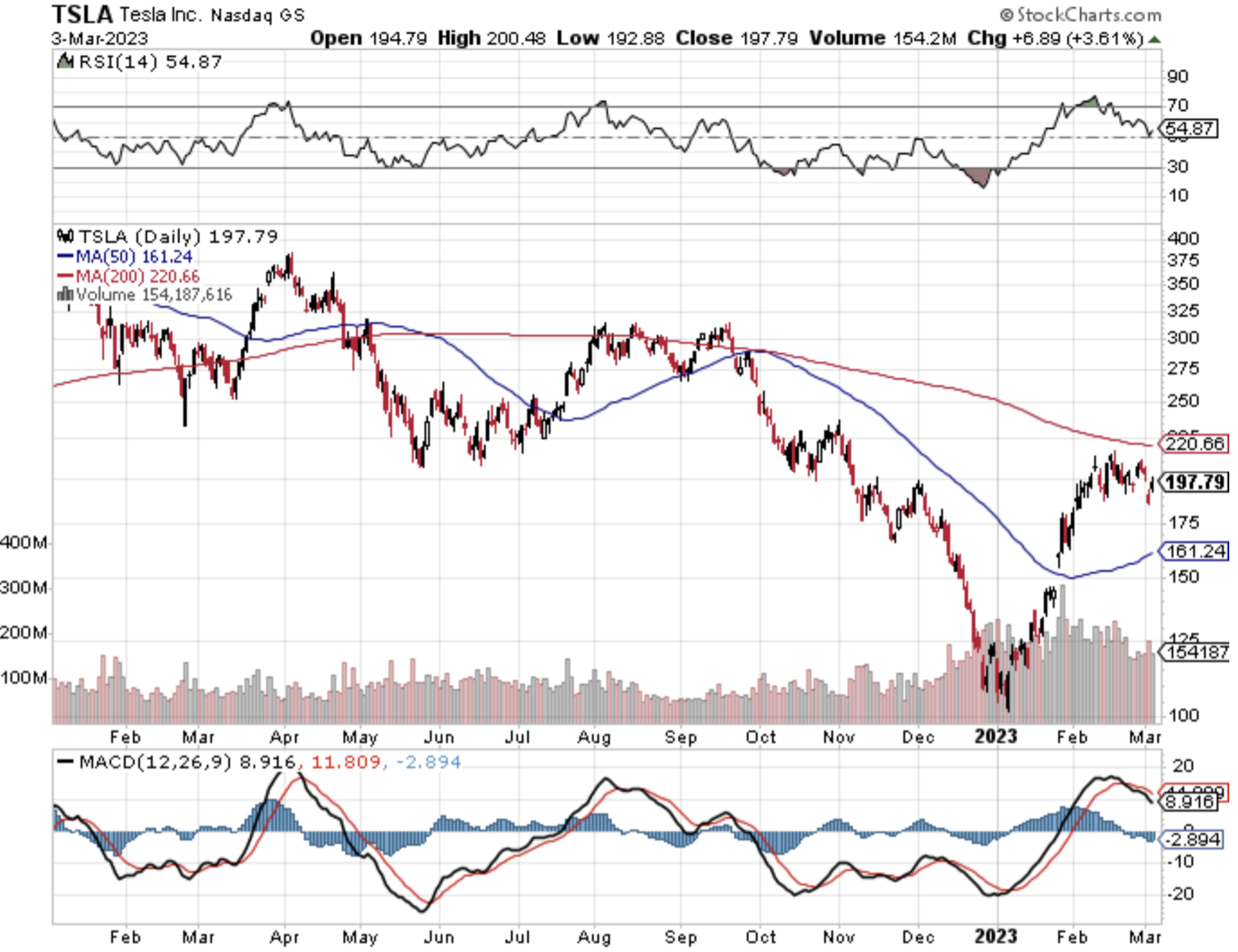Mad Hedge Biotech and Healthcare Letter
March 7, 2023
Fiat Lux
Featured Trade:
(A PIONEERING LEADER IN THE HEALTHCARE WORLD)
(ISRG)
The United States allocates a jaw-dropping 18% of its GDP on healthcare alone. That comprises twice the amount spent by other industrialized nations. Despite that, the US has the shortest life expectancy among the rest of the developed countries and the highest number of recorded maternal deaths.
A potential reason for this disappointing report is that a considerable sum of the capital gets invested in administrative expenses, including insurance companies, defensive care (aka protection for doctors against litigation), and the maintenance of a majorly disconnected system that involves an unparalleled number of varying payers, and a long list of billing staff and specialists. As a result, the healthcare system is plagued with frustrating inefficiencies and an astounding absence of coordination.
In fact, the administrative expenses of America’s National Health Expenditure (NHE) reach a total of about $1 trillion annually. That is roughly 30% of its overall spending.
This staggering amount has paved the way for artificial intelligence (AI) to enter the fray. If AI can offer tangible solutions to administrative issues, the US could save a quarter of its yearly spending on healthcare.
While that is promising, the benefits of AI won’t end there.
The convergence of AI, robotics, and surgery is an exciting area of technological advancement that will likely shape the future of medicine in the coming decade. AI and robotics are already being used in surgery to improve the accuracy and precision of procedures, reduce the risk of human error, and enhance patient outcomes.
In the case of surgeries, a critical question to ask your surgeons is, “How many times have you performed this specific procedure?”
Undoubtedly, surgeons who have done the surgery more times are considered the best options. They have presumably witnessed every potential variation and gained valuable experience when things go awry and, of course, how to remedy the situation. Typically, an experienced surgeon will perform hundreds of procedures every year.
But how would you feel if you discovered that your surgeon is an “AI-robotic platform” that has performed millions of operations yearly?
This AI-robot system would offer a multitude of benefits. First, it can assess the surgical field via infrared and ultraviolet, as well as conduct any procedure with incredible precision and dexterity. Second, the robot won’t be a victim of “human factors” like taking too much coffee, not getting sufficient rest or sleep, or arguing with their spouse hours before the surgery. Third, the platform could offer ways to eventually demonetize and democratize the procedure, enabling thousands of hospitals across the globe to access the technology.
So far, though, there’s no AI capable of performing 100% autonomous procedures. The closest we’ve gotten to date was in 2022 when a group of researchers at Johns Hopkins successfully created STAR or “Smart Tissue Autonomous Robot.”
STAR could perforce a laparoscopic surgery on a pig without any assistance from a human operator or surgeon. This makes the system not only unique but also extremely promising because it needs minimal to no human guidance.
Meanwhile, until this technology becomes completely available, the only company closest to this advancement is Intuitive Surgical (ISRG).
Intuitive’s platform, an “Avatar Robotic System” called da Vinci, allows an experienced surgeon to perform the surgery remotely in what they call “tele-operation mode.” Thus far, more than 60,000 surgeons have completed over 10 million surgical procedures via the da Vinci platform.
Another promising product in Intuitive’s portfolio is called the Ion Endoluminal System.
Intuitive's Ion Endoluminal System is a robotic-assisted platform designed for minimally invasive lung biopsy. It is intended to provide a minimally invasive method for obtaining lung tissue samples that can be used to diagnose lung diseases such as lung cancer.
Basically, the Ion Endoluminal System is made up of a flexible robotic catheter inserted through the patient's mouth or nose and guided to the target area of the lung via real-time imaging. A small needle on the catheter can be used to collect tissue samples from the lung without the need for a surgical incision.
The system guides the catheter to the precise location where the tissue sample is required using advanced imaging technologies such as ultrasound and electromagnetic navigation. The system also includes a workstation, allowing the physician to control the catheter and view the imaging results in real-time.
The Ion Endoluminal System has several advantages over traditional biopsy methods, including less trauma to the patient, shorter recovery times, and the ability to obtain tissue samples from difficult-to-reach areas of the lung. Overall, the Ion system is a significant advancement in the field of minimally invasive lung biopsy, with the potential to improve lung disease diagnosis and treatment.
Robot-assisted medical procedures beat the shaky hands of human surgeons. That thesis has not been proven wrong since Intuitive went public in 2005. The company has emerged as the apparent market leader with its “razors and blades” model that ensures it generates a recurring revenue stream as its platforms are used to perform surgeries.
At this point, Intuitive controls about 805 of this multi-billion-dollar market worldwide. In 2022, the surgical robotics market was valued at $8.5 billion, with this sector projected to exhibit tremendous growth to reach over double its valuation to $18 billion by 2027.
If you’re searching for a profitable business in a booming healthcare industry segment, Intuitive appears to be a no-brainer stock to add to your portfolio and hold for the long term. I suggest you buy the dip.
When John identifies a strategic exit point, he will send you an alert with specific trade information as to what security to sell, when to sell it, and at what price. Most often, it will be to TAKE PROFITS, but, on rare occasions, it will be to exercise a STOP LOSS at a predetermined price to adhere to strict risk management discipline. Read more
Global Market Comments
March 7, 2023
Fiat Lux
Featured Trade:
(A NOTE ON ASSIGNED OPTIONS OR OPTIONS CALLED AWAY),
(TLT), (TSLA)
CLICK HERE to download today's position sheet.
Since we have a hefty 50% weighting in long bond options, it’s time to review how to handle options called away.
The higher the yield on a security, the greater the call away risk. With ten-year US Treasury yields now at 4.00%, the call away risk is heightened.
Let’s say you call away an option the day before the ETF goes ex-dividend. That enables you to collect an entire quarter’s 88 basis point payout in a day. A measly 88 basis points may not be much for you, but it is a lot for a highly leveraged hedge fund.
That places the March expirations at greatest risk of a call away when dividends are paid out. While our longest expiration is currently February 17, it’s still best to become fluent in the call away process now.
In the run-up to every options expiration, which is the third Friday of every month, there is a possibility that any short options positions you have may get assigned or called away.
The first notice you may get of options called away is a shocking out-of-the-blue margin call of $1 million or more.
If that happens, there is only one thing to do: fall down on your knees and thank your lucky stars. You have just made the maximum possible profit for your position instantly.
Most of you have short option positions, although you may not realize it. For when you buy an in-the-money vertical option spread, it contains two elements: a long option and a short option.
The short options, which are owned by somebody else, can get “assigned,” or “called away” at any time, as it is owned by a third party, the one you initially sold the put option to when you initiated the position.
You have to be careful here because the inexperienced can blow their newfound windfall if they take the wrong action, so here’s how to handle it correctly. I’ll use a previous trade as an example.
Let’s say you get an email from your broker telling you that your call options have been assigned away. I’ll use the example of the Microsoft (MSFT) December 2019 $134-$137 in-the-money vertical BULL CALL spread.
For what the broker had done in effect is allow you to get out of your call spread position at the maximum profit point 8 days before the December 20 expiration date. In other words, what you bought for $4.50 last week is now $5.00!
All have to do is call your broker and instruct them to exercise your long position in your (MSFT) December $134 calls to close out your short position in the (MSFT) December $137 calls.
This is a perfectly hedged position, with both options having the same expiration date, the same amount of contracts in the same stock, so there is no risk. The name, number of shares, and number of contracts are all identical, so you have no exposure at all.
Calls are a right to buy shares at a fixed price before a fixed date, and one option contract is exercisable into 100 shares.
To say it another way, you bought the (MSFT) at $134 and sold it at $137, paid $2.60 for the right to do so, so your profit is 40 cents, or ($0.40 X 100 shares X 38 contracts) = $1,520. Not bad for an 18-day limited risk play.
Sounds like a good trade to me.
Weird stuff like this happens in the run-up to options expirations like we have coming.
A call owner may need to buy a long (MSFT) position after the stock market close, and exercising his long December $134 call is the only way to execute it.
Adequate shares may not be available in the market, or maybe a limit order didn’t get done by the market close.
There are also thousands of algorithms out there which may arrive at some twisted logic that the puts need to be exercised.
Many require a rebalancing of hedges at the close every day which can be achieved through option exercises.
And yes, options even get exercised by accident. There are still a few humans left in this market to blow it by writing shoddy algorithms.
And here’s another possible outcome in this process.
Your broker will call you to notify you of an option called away, and then give you the wrong advice on what to do about it. They’ll tell you to take delivery of your long stock and then post additional margin to cover the risk.
Either that or you can just sell your shares on the following Monday and take on a ton of risk over the weekend. This generates a boatload of commission for the brokers but impoverishes you.
There may not even be an evil motive behind the bad advice. Brokers are not investing a lot in training staff these days because as soon as someone learns something useful, they take a job elsewhere for more money. It doesn’t pay. In fact, I think I’m the last one they really did train.
Avarice could have been an explanation here but I think stupidity and poor training and low wages are much more likely.
Brokers have so many legal ways to steal money that they don’t need to resort to the illegal kind.
This exercise process is now fully automated at most brokers but it never hurts to follow up with a phone call if you get an exercise notice. Mistakes do happen.
Some may also send you a link to a video of what to do about all this.
If any of you are the slightest bit worried or confused by all of this, come out of your position RIGHT NOW at a small profit! You should never be worried or confused about any position tying up YOUR money.
Professionals do these things all day long and exercises become second nature, just another cost of doing business.
If you do this long enough, eventually you get hit. I bet you don’t.
Calling All Options!
“Patience can be learned. Having a long attention span and the ability to concentrate on one thing for a long time is a huge advantage when investing,” said Warren Buffet partner, the 99-year-old Charlie Munger.
When John identifies a strategic exit point, he will send you an alert with specific trade information as to what security to sell, when to sell it, and at what price. Most often, it will be to TAKE PROFITS, but, on rare occasions, it will be to exercise a STOP LOSS at a predetermined price to adhere to strict risk management discipline. Read more
Mad Hedge Technology Letter
March 6, 2023
Fiat Lux
Featured Trade:
(DEALING WITH A BLACK BOX)
(TSLA), (UBER), (LYFT)
Who is responsible when artificial intelligence harms someone?
The California jury may soon have to make a decision. In December 2019, a man driving a Tesla (TSLA) with an AI navigation system killed two people in an accident. The driver faces up to 12 years in prison.
These events were bound to happen as teething pains are quite common with new technology especially one that is ambitious enough to transport machines in a human world.
Multiple federal agencies are investigating Tesla crashes, and The California Department of Motor Vehicles is investigating the use of AI-controlled driving functions.
Our current liability system, used to determine liability and compensation for injuries, is not AI-friendly.
Liability rules were designed for a time when humans caused most injuries.
But with AI, errors can occur without direct human intervention. The liability system must be adjusted accordingly. Poor accountability won't just stifle AI innovation. It will also harm patients and consumers.
It's time to start thinking about accountability as AI becomes ubiquitous but remains under-regulated. AI-based systems have already contributed to injuries.
The right accountability approach is critical to unlocking the potential of AI. Uncertain regulations and the prospect of costly litigation will deter investment, development, and deployment of AI in industries ranging from healthcare to autonomous vehicles.
Currently, liability claims typically begin and end with the person using the algorithm. Of course, if someone abuses the AI system or ignores its warnings, that person should be held accountable.
But AI errors are often not the user's fault. Who can blame an emergency doctor for letting an AI algorithm miss papilledema — a swelling of part of the retina?
AI's failure to detect the disease could delay care and potentially cause the patient to lose their eyesight. Papilledema is difficult to diagnose without an ophthalmologist.
AI is constantly self-learning, which means it takes in information and looks for patterns in it. This is a "black box" that makes it difficult to understand which variables affect the outcome.
The key is to ensure that everyone involved - users, developers, and everyone else in the chain - has been vetted to keep AI safe and effective.
First, insurers should protect policyholders from AI injury litigation costs by testing and validating new AI algorithms before deploying them.
Car insurers have also been comparing and testing cars for years. An independent security system can provide AI stakeholders with a predictable system of accountability that adapts to new technologies and practices.
Second, some AI errors should be challenged in courts that specialize in uncommon cases. These tribunals may specialize in particular technologies or topics.
Third, proper regulatory standards from federal agencies can offset the excessive liability of developers and users. For example, some forms of medical device liability have been superseded by federal regulations and laws. Regulators should focus on standard AI development processes early on.
Regulation can make or break AI in the upcoming years and I definitely lean towards the laissez faire attitude of deregulation.
Too many regulations will stifle the development and bring about undue costs.
No company will continue with loss-making operations unless they see a light at the end of the tunnel.
If allowed to develop with light regulation, AI will be that supercharger to tech stocks that investors dreamed of.
Transportation-based tech stocks such as Uber and Lyft will be one of the largest winners from the widespread implementation of driverless technology.
Also, throw in there the food delivery companies like DoorDash (DASH).
Another group with immense expense-saving possibilities is all the airlines around the world because theoretically, self-driving technology will become good enough to deploy in short and long-haul flights.
Getting to the point of consumers and regulators fully trusting self-driving technology is still a long and windy path, but I do believe we will arrive there.
When we do get there, the tech companies exposed to these great benefits will feel a 10X boost to their share price.
Legal Disclaimer
There is a very high degree of risk involved in trading. Past results are not indicative of future returns. MadHedgeFundTrader.com and all individuals affiliated with this site assume no responsibilities for your trading and investment results. The indicators, strategies, columns, articles and all other features are for educational purposes only and should not be construed as investment advice. Information for futures trading observations are obtained from sources believed to be reliable, but we do not warrant its completeness or accuracy, or warrant any results from the use of the information. Your use of the trading observations is entirely at your own risk and it is your sole responsibility to evaluate the accuracy, completeness and usefulness of the information. You must assess the risk of any trade with your broker and make your own independent decisions regarding any securities mentioned herein. Affiliates of MadHedgeFundTrader.com may have a position or effect transactions in the securities described herein (or options thereon) and/or otherwise employ trading strategies that may be consistent or inconsistent with the provided strategies.












